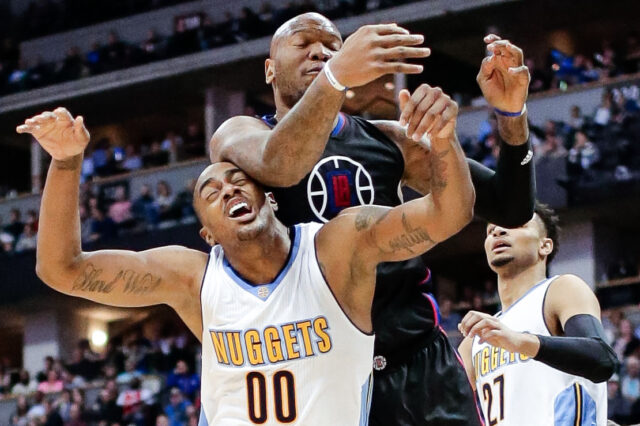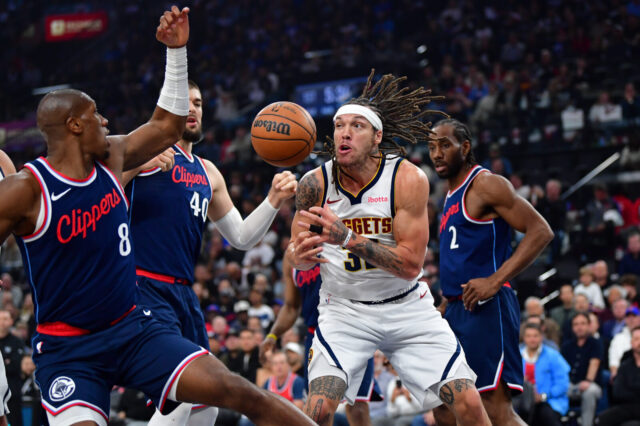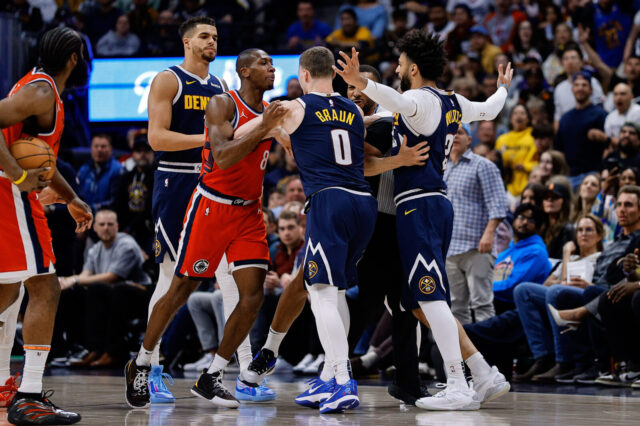If you’re not familiar with Film Fridays, each Friday, I’ll be looking at some recent Denver Nuggets’ games, lineups or something else from a film aspect to try and bring you a piece of content that you’re not getting somewhere else. Feel free to give any feedback positive or negative in the comments or find me on Twitter.
This will be part two in our mini-series here on Film Friday looking at potential breakout players for the 2021-22 season for the Nuggets. After covering P.J. Dozier in last week’s piece, this week we’re looking at second-year forward Zeke Nnaji. Nnaji is primed for a big uptick in his role depending on how the free-agent market in Denver shakes out. If Paul Millsap or JaMychal Green find a new home, Nnaji would be in line for an increase in minutes to around 20 per game behind Michael Porter Jr. and Aaron Gordon in the forward rotation.
Nnaji is heading into his second season out of Arizona. Nnaji was drafted by the Nuggets 22nd overall in the 2020 NBA draft with the pick they got in a trade with the Houston Rockets. Nnaji, while not the player with the highest ceiling in that draft class, he does have one of the cleaner projections into the modern-NBA for a power forward. With Millsap in place for at least the 2020-21 season, Nnaji could use his rookie year to learn and grow behind the veteran forward.
Heading into the 2021-22 season, Nnaji could see a big change in his role over the next few months. He played in 42 games as a rookie while averaging 9.5 minutes per game. A lot of healthy scratches came his way, but that’s going to happen when you’re behind Porter, Gordon, Millsap and Green, who could all start on various teams across the league. Now, there’s a possibility that he’ll be one of or the first big off of the bench if he’s able to take a few steps forward in some key areas.
Maintain 3-Point Consistency with More Volume
As a rookie, Nnaji attempted 5.4 3-point shots per-36 minutes, but he was only attempting one per game. Among rookies with at least 50 3-point attempts, Nnaji ranked fifth in 3-point percentage with a 40.7 percent mark from downtown. As a second-year player, he’ll have to show that he can maintain that efficiency with a greater volume of shots from outside. Nnaji will very rarely be asked to create his own shot when he’s on the floor, especially from 3-point range. However, he needs to continue to knock down looks like this. Point guard Markus Howard is driving towards the cup, and he’s averaging just 3.2 assists per-36 minutes. That doesn’t matter because Nnaji stays ready, and he rises up immediately for the shot on the catch. If he hesitates at all, Nassir Little is able to get to the shot for a block. Instead, he just has to turn around and watch the shot fall.
Over the last two years, Millsap took another step with his 3-point shooting which allowed him to thrive alongside center Nikola Jokic. Jokic is always looking for open shooters, and, when the extra defenders come towards him, he knows where the open man is. When he finds you, you have to hit those shots because it makes the offense more and more dangerous. The main difference that you’ll notice about this shot is how where he catches the ball affects the shot itself. Nnaji’s motion is longer one that sees him bring the ball down before rising up and releasing. On the previous play, he catches Howard’s pass lower around his waist which allows him to bring the ball straight up without resetting. On this pass from Jokic, he catches the ball up around his head before taking it down to waist height and rising up again. If he isn’t going to change his shooting motion, he at least needs to speed up the process because he is allowing defenders too much time to recover and close out on him.
Work Inside the Arc
During his lone college season, Zeke attempted a whopping 17 3-point shots, and he went 5-of-17 on those shots. He excelled on alley-oops as well as down on the block. Last season, Nnaji attempted just 45 shots inside the 3-point line. When looking at the guys he’s playing around, specifically Jokic and Jamal Murray, who both excel inside the paint, there isn’t as much room for Nnaji to work which is why his 3-point shooting matters so much. However, if he’s fully going to take on the role that Millsap is leaving behind, he has to be able to score down on the block. On 256 attempts inside 10 feet, Millsap shot 56.6 percent. Meanwhile, Nnaji shot 62.1 percent on 37 attempts, but he was only 3-of-14 from 3-to-10 feet. On the play above, Nnaji catches the ball just inside the 3-point line in the corner. He gets his back to the basket and tries to back his opponent down just like he did in college. He outweighs Sadiq Bey by 25 pounds, but he just never really gains any ground to get a good shot. The possession ultimately ends with Nnaji getting blocked by Killian Hayes who just has to reach over without even jumping. Nnaji isn’t going to bully NBA wings like he did against two-star forwards in college. He has to work better on his polish and back-to-the-basket game this season.
While he works on his back-to-the-basket game, he needs to focus on furthering his skills off of the ball. On this play, he does a simple handoff that gives the ball to Dozier and forces a switch in his favor. He rotates through, and, once he has the space from his defender, he seals him off which gives Facundo Campazzo an easy passing lane to feed him the ball. After that, he’s close enough to the basket that the defender has no choice but to foul him, and Nnaji still scores. Nnaji is a decent cutter with solid athleticism, and, if he can learn how to put himself in the best positions on the floor, he can raise his offensive potential in this lineup.
Continue Defensive Growth
Arguably the main skill that Nnaji will have to rapidly improve before next year is his defensive acumen. Millsap’s biggest strength has been his work on the defensive end. While he was never the biggest or most athletic power forward, he knew how to put himself into the right position to make plays on his assignment as well as on plays where he had to slide over and help a teammate. Nnaji showed some flashes last year on the defensive end, but he needs to get more consistent on that end. This isn’t a particularly difficult matchup with former first-round pick T.J. Leaf down on the block. Leaf doesn’t have the size to back Nnaji down to the cup, but he does get Nnaji moving backwards a bit. Nnaji does a good job of staying connected without reaching in and drawing a foul before forcing the miss. His ability to slide his feet and stay in front of his assignment will need to continue to grow as he takes on more difficult assignments.
This is a play where he just has to understand situations better. The Nuggets are down by 22 points late in the third quarter. The starters for Denver have already been pulled, so the comeback attempt is over. Nnaji’s primary assignment is Robert Covington at the top of the key, but he’s hovering around the elbow to help on Damian Lillard and to restrict passing lanes. By the time Nnaji recognizes that Lillard is going for the jump shot, he’s already into the air when Zeke goes for the contest. This turns into a foul that sends Lillard to the line where he completes the 3-point play. He was never going to stop that shot, and he has to just give that one up rather than giving Lillard a chance for a free bucket at the line.
For those of you that are still here, remember to leave your feedback in the comments or over on my Twitter, and have a fantastic film-filled Friday.


